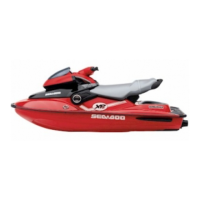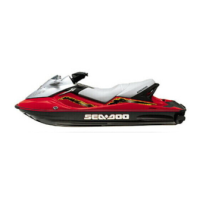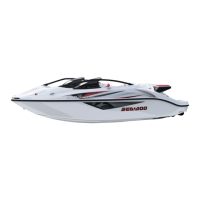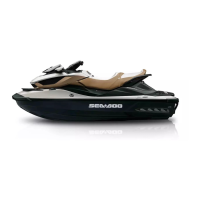Section 12 ELECTRICAL SYSTEM
Subsection 02 (IGNITION SYSTEM (CARBURETED ENGINES))
12-02-12 SMR2003-035_12_02A.FM
1. With ignition coil removed from craft, discon-
nect spark plug caps from high tension cables.
2. Hook high tension leads from tester to ignition
coil high tension cables.
3. Connect 2 smaller tester leads to primary of ig-
nition coil.
TYPICAL
1. Leads to secondary
2. Leads to primary
4. Turn power switch to 12 volts and you should
observe spark jumping at a predetermined gap
of 7 to 8 mm (.276 to .311 in).
If there is no spark, if it is weak or intermittent, the
coil is defective and should be replaced.
SPARK PLUGS
Disassembly
First unscrew the spark plug one turn.
Clean the spark plug and cylinder head with pres-
surize air then completely unscrew.
Heat Range
The proper heat range of the spark plugs is deter-
mined by the spark plugs ability to dissipate the
heat generated by combustion.
The longer the heat path between the electrode
tip to the plug shell, the hotter the spark plug op-
erating temperature will be — and inversely, the
shorter the heat path, the colder the operating
temperature will be.
A “cold” type plug has a relatively short insulator
nose and transfers heat very rapidly into the cylin-
der head.
Such a plug is used in heavy duty or continuous
high speed operation to avoid overheating.
The “hot” type plug has a longer insulator nose
and transfers heat more slowly away from its firing
end. It runs hotter and burns off combustion de-
posits which might tend to foul the plug during
prolonged idle or low speed operation.
1. Cold
2. Hot
CAUTION: Severe engine damage might occur
if a wrong heat range plug is used.
A too “hot” plug will result in overheating and pre-
ignition, etc.
A too “cold” plug will result in fouling or may create
carbon build up which can heat up red-hot and cause
pre-ignition or detonation.
A00E09A
12

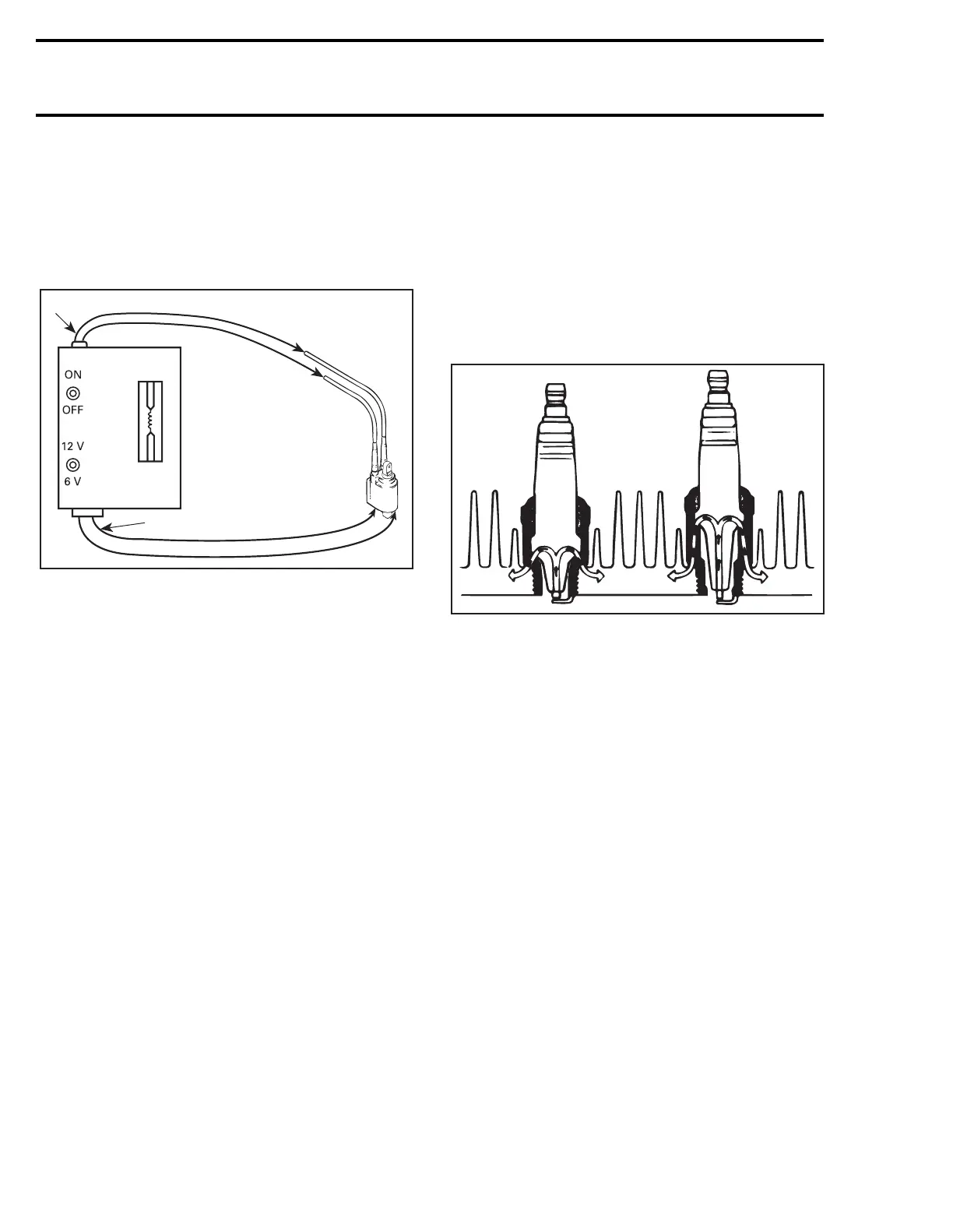